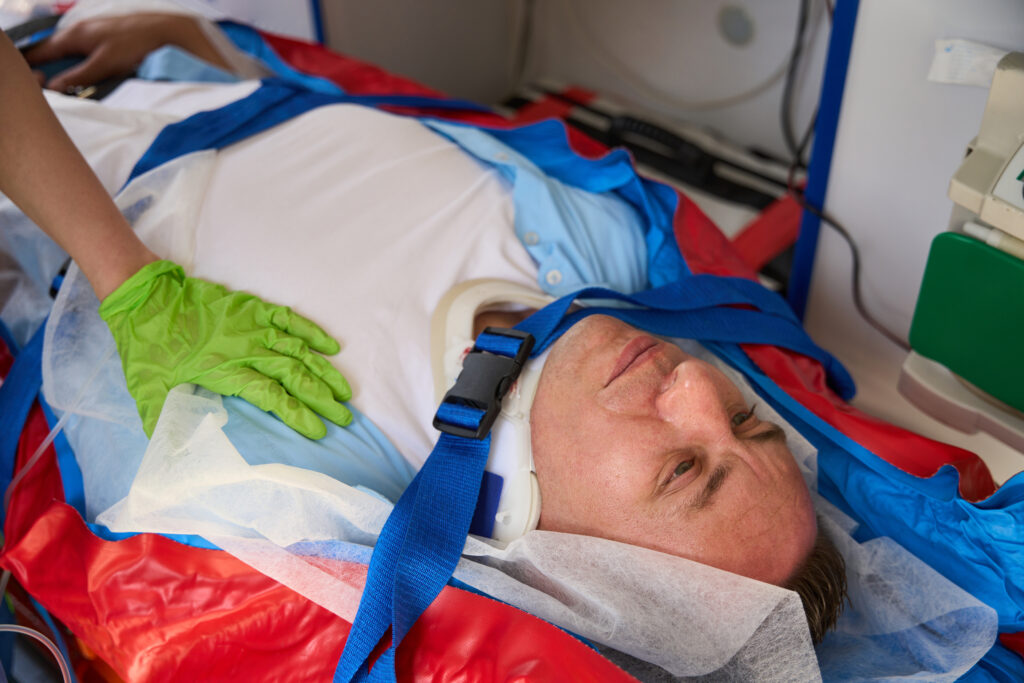
When “Nowhere to Go” Becomes a Compliance Problem
I think many have heard me discuss a common scenario with which hospitals are grappling: patients who are medically ready for discharge, but have no

Vascular embolization can prove challenging for many coders. Knowing the fundamentals of vascular embolization is important for successful CPT® coding. By gaining better comprehension of these services, healthcare coding and billing professionals can help ensure accurate coding while safeguarding full reimbursement. Let’s take a look at
Understanding the circumstances and requirements for rupture coding can be complicated for many CPT® coders. By gaining better comprehension of this situation and service, coding accuracy increases while protecting regulatory compliance and recapturing potentially lost revenue.
As you may know, CPT allows for several available different codes to report each of the four types of stent-graft placements. Understand that each code choice option is broken into a code to specify for “other than rupture” and “for rupture.” The following reasons for “other than rupture” can be:
What do the codes for rupture encompass? The codes “for rupture” will include temporary balloon occlusion whether performed or not. Note that repair for rupture is expected to involve more time, skill, and risk on the part of the provider.
Rupture (as related to this code set) is defined as:
Understand that rupture repair may be performed for the same four reasons as above as well as traumatic disruption.
The procedure for rupture is completed on an emergency basis and is not considered elective since patients undergoing the procedure tend to be much sicker than normal. Recovery may prove to be longer, and patients may require subsequent procedures (i.e., the initial graft may not be long enough, etc.). Understand that there is no one specific type of device that could be used to treat a rupture. As such, any covered stent “counts” regarding coding for this service.
These codes should be assigned if during a routine angioplasty or stent placement in the aorta or iliac arteries rupture occurs and is treated by covered stent placement. Also, know that rupture codes may be assigned when there is hemorrhage, and the patient is not stable (hemodynamically). It is important to note that rupture codes should not be used when the rupture is subintimal or otherwise contained (patient is hemodynamically stable). The associated codes may also be applied to traumatic rupture as well.
So how do we separate which codes to use? Even-numbered codes will specify treatment for rupture:
Endovascular repair of infrarenal aorta by deployment of an aorto-aortic tube endograft including pre-procedure sizing and device selection, all nonselective catheterization(s), all associated radiological supervision and interpretation, all endograft extension(s) placed in the aorta from the level of the renal arteries to the aortic bifurcation, and all angioplasty/stenting performed from the level of the renal arteries to the aortic bifurcation; for rupture including temporary aortic and/or iliac balloon occlusion, when performed (eg, for aneurysm, pseudoaneurysm, dissection, penetrating ulcer, traumatic disruption)
Endovascular repair of infrarenal aorta and/or iliac artery(ies) by deployment of an aorto-uni-iliac endograft including pre-procedure sizing and device selection, all nonselective catheterization(s), all associated radiological supervision and interpretation, all endograft extension(s) placed in the aorta from the level of the renal arteries to the iliac bifurcation, and all angioplasty/stenting performed from the level of the renal arteries to the iliac bifurcation; for rupture including temporary aortic and/or iliac balloon occlusion, when performed (eg, for aneurysm, pseudoaneurysm, dissection, penetrating ulcer, traumatic disruption)
Endovascular repair of infrarenal aorta and/or iliac artery(ies) by deployment of an aorto-bi-iliac endograft including pre-procedure sizing and device selection, all nonselective catheterization(s), all associated radiological supervision and interpretation, all endograft extension(s) placed in the aorta from the level of the renal arteries to the iliac bifurcation, and all angioplasty/stenting performed from the level of the renal arteries to the iliac bifurcation; for rupture including temporary aortic and/or iliac balloon occlusion, when performed (eg, for aneurysm, pseudoaneurysm, dissection, penetrating ulcer, traumatic disruption)
Endovascular repair of iliac artery by deployment of an ilio-iliac tube endograft including pre-procedure sizing and device selection, all nonselective catheterization(s), all associated radiological supervision and interpretation, and all endograft extension(s) proximally to the aortic bifurcation and distally to the iliac bifurcation, and treatment zone angioplasty/stenting, when performed, unilateral; for rupture including temporary aortic and/or iliac balloon occlusion, when performed (eg, for aneurysm, pseudoaneurysm, dissection, arteriovenous malformation, traumatic disruption)
Endovascular repair of infrarenal aorta by deployment of an aorto-aortic tube endograft including pre-procedure sizing and device selection, all nonselective catheterization(s), all associated radiological supervision and interpretation, all endograft extension(s) placed in the aorta from the level of the renal arteries to the aortic bifurcation, and all angioplasty/stenting performed from the level of the renal arteries to the aortic bifurcation; for other than rupture (eg, for aneurysm, pseudoaneurysm, dissection, penetrating ulcer)
Endovascular repair of infrarenal aorta and/or iliac artery(ies) by deployment of an aorto-uni-iliac endograft including pre-procedure sizing and device selection, all nonselective catheterization(s), all associated radiological supervision and interpretation, all endograft extension(s) placed in the aorta from the level of the renal arteries to the iliac bifurcation, and all angioplasty/stenting performed from the level of the renal arteries to the iliac bifurcation; for other than rupture (eg, for aneurysm, pseudoaneurysm, dissection, penetrating ulcer)
Endovascular repair of infrarenal aorta and/or iliac artery(ies) by deployment of an aorto-bi-iliac endograft including pre-procedure sizing and device selection, all nonselective catheterization(s), all associated radiological supervision and interpretation, all endograft extension(s) placed in the aorta from the level of the renal arteries to the iliac bifurcation, and all angioplasty/stenting performed from the level of the renal arteries to the iliac bifurcation; for other than rupture (eg, for aneurysm, pseudoaneurysm, dissection, penetrating ulcer)
Endovascular repair of iliac artery by deployment of an ilio-iliac tube endograft including pre-procedure sizing and device selection, all nonselective catheterization(s), all associated radiological supervision and interpretation, and all endograft extension(s) proximally to the aortic bifurcation and distally to the iliac bifurcation, and treatment zone angioplasty/stenting, when performed, unilateral; for other than rupture (eg, for aneurysm, pseudoaneurysm, dissection, arteriovenous malformation)
It is important to note that if treating a rupture that is considered chronic, and if contained would be considered a pseudoaneurysm. As such, codes 34701, 34703, 34705, or 34707 would be assigned instead of the codes for “rupture.”
Subscribe to our interventional radiology insights and check back every month as we examine both common and complex medical CPT coding challenges seen across the country.
Looking to gain more mastery of radiology coding and capture more reimbursement? Check out our Comprehensive Radiology All-Access Pass to gain access to our full library of resources.


I think many have heard me discuss a common scenario with which hospitals are grappling: patients who are medically ready for discharge, but have no

Last week I wrote about querying for the type of acute encephalopathy, and I’d like to continue this week. Please know, when I use the
Please log in to your account to comment on this article.

Sepsis remains one of the most frequently denied and contested diagnoses, creating costly revenue loss and compliance risks. In this webcast, Angela Comfort, DBA, MBA, RHIA, CDIP, CCS, CCS-P, provides practical, real-world strategies to align documentation with coding guidelines, reconcile Sepsis-2 and Sepsis-3 definitions, and apply compliant queries. You’ll learn how to identify and address documentation gaps, strengthen provider engagement, and defend diagnoses against payer scrutiny—equipping you to protect reimbursement, improve SOI/ROM capture, and reduce audit vulnerability in this high-risk area.

Only ICD10monitor delivers what you need: updates on must-know changes associated with the FY26 IPPS, including new ICD-10-CM/PCS codes, CCs/MCCs, and MS-DRGs, plus insights, analysis and answers to your questions from two of the country’s most respected subject matter experts.

This third session in our 2026 IPPS Masterclass will feature a review of FY26 changes to the MS-DRG methodology and new technology add-on payments (NTAPs), presented by nationally recognized ICD-10 coding expert Christine Geiger, MA, RHIA, CCS, CRC, with bonus insights and analysis from Dr. James Kennedy.

This second session in our 2026 IPPS Masterclass will feature a review the FY26 changes to ICD-10-PCS codes. This information will be presented by nationally recognized ICD-10 coding expert Christine Geiger, MA, RHIA, CCS, CRC, with bonus insights and analysis from Dr. James Kennedy.

During this essential RACmonitor webcast Michael Calahan, PA, MBA Certified Compliance Officer, will clarify the rules, dispel common misconceptions, and equip you with practical strategies to code, document, and bill high-risk split/shared, incident-to & critical care E/M services with confidence. Don’t let audit risks or revenue losses catch your organization off guard — learn exactly what federal auditors are looking for and how to ensure your documentation and reporting stand up to scrutiny.

Learn how to navigate the proposed elimination of the Inpatient-Only list. Gain strategies to assess admission status, avoid denials, protect compliance, and address impacts across Medicare and non-Medicare payors. Essential insights for hospitals.

RACmonitor is proud to welcome back Dr. Ronald Hirsch, one of his most requested webcasts. In this highly anticipated session, Dr. Hirsch will break down the complex Two Midnight Rule Medicare regulations, translating them into clear, actionable guidance. He’ll walk you through the basics of the rule, offer expert interpretation, and apply the rule to real-world clinical scenarios—so you leave with greater clarity, confidence, and the tools to ensure compliance.

Bring your questions and join the conversation during this open forum series, live every Wednesday at 10 a.m. EST from June 11–July 30. Hosted by Chuck Buck, these fast-paced 30-minute sessions connect you directly with top healthcare experts tackling today’s most urgent compliance and policy issues.
CYBER WEEK IS HERE! Don’t miss your chance to get 20% off now until Dec. 2 with code CYBER24